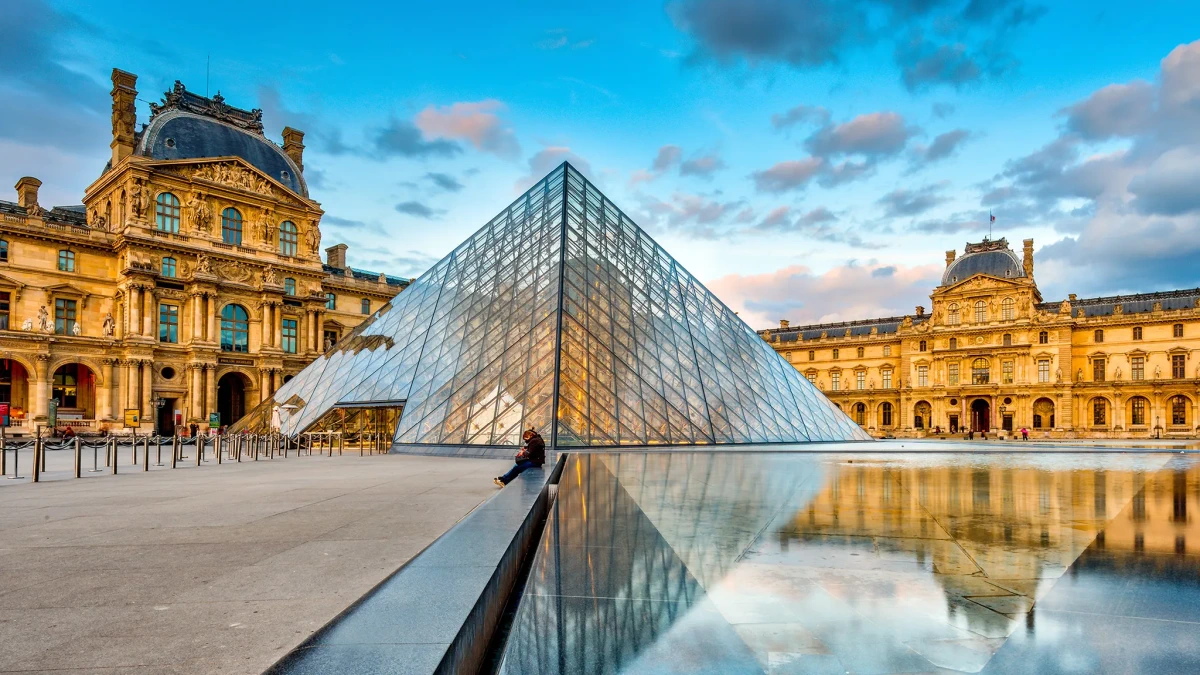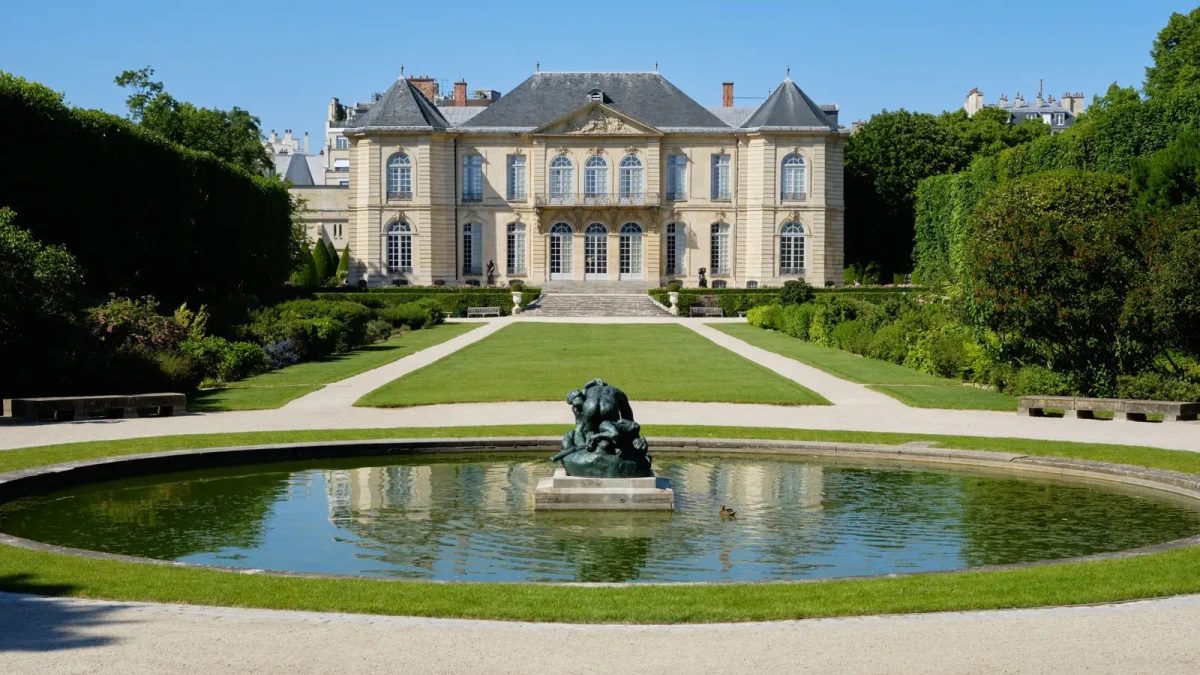Beneath the romantic streets of Paris lies a dark and mysterious world known as the Paris Catacombs. These subterranean tunnels, filled with neatly stacked human bones, hold a history that is both intriguing and macabre. The origins of the Paris Catacombs are rooted in a combination of necessity, urban planning, and the need to address a gruesome problem that plagued the city in the late 18th century.
In this article, we will embark on a journey to uncover the eerie secrets of the old mines that have become known as the Paris Catacombs.
Note: This article contains affiliate links. In case you purchase something through one of these links, we may receive a small commission at no extra cost for you. Thank you for helping us keep creating the free content on this website!
Paris Catacombs: A Brief Overview
The Paris Catacombs, also known as "Les Catacombes de Paris," are an extensive network of underground tunnels, ossuaries, and chambers located beneath the streets of Paris, France. This subterranean world serves as the final resting place for millions of souls, making it one of the most intriguing and haunting attractions in the city.
A Walk Through History
The Origins of the Paris Catacombs
The origins of the Paris Catacombs can be traced back to the late eighteenth century, a period marked by significant public health issues arising from the overcrowded city cemeteries. To address this pressing concern, authorities in Paris made the momentous decision to relocate the remains from these cemeteries to a subterranean location.
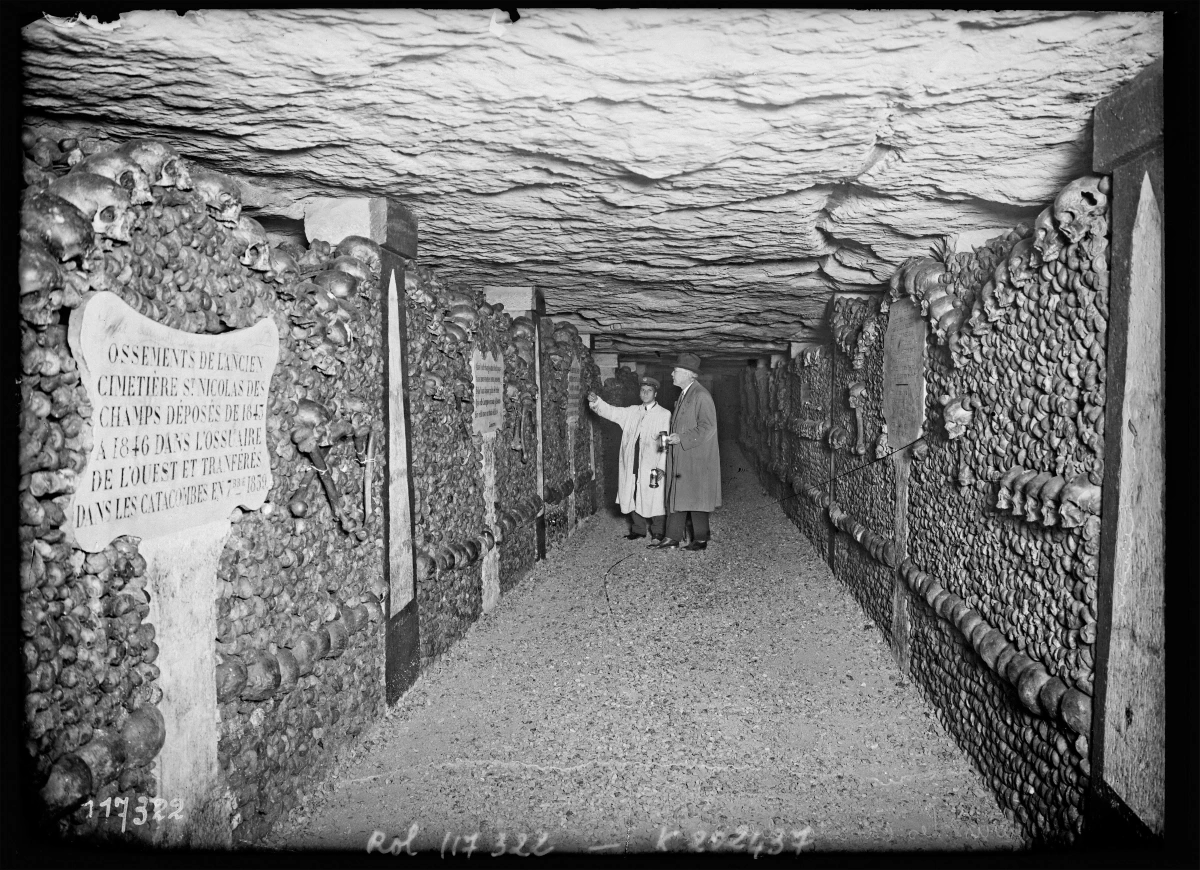
For this purpose, the Parisian officials selected a conveniently accessible site situated just beyond the city limits at the time - the former Tombe-Issoire quarries beneath the plains of Montrouge. These quarries, which had been in use since at least the fifteenth century before being abandoned, constituted a mere fraction of the intricate underground network that sprawled beneath the city, covering an expansive area of approximately 800 hectares.
The Transformation
The meticulous planning of the site and the orchestration of bone transfers fell under the purview of Charles Axel Guillaumot, an inspector at the Department of General Quarry Inspection. Established on April 4, 1777, by the decree of Louis XVI, this department's noble purpose was to stabilize the abandoned quarries that had succumbed to significant subsidence beneath the bustling streets of Paris during the mid-eighteenth century.
The initial evacuations transpired between 1785 and 1787 and were centered around the grandest of Parisian resting places, the Saints-Innocents cemetery. Having served as the final resting place for nearly a millennium, it had been sealed off in 1780. The task at hand was to clear its tombs, communal graves, and ossuaries of their skeletal occupants. This nocturnal endeavor was carried out discreetly to avert any adverse reactions from both the city's inhabitants and the ecclesiastical authorities. The skeletal remains found their new abode within two quarry wells before being methodically distributed and stacked within the subterranean catacombs by the diligent quarry laborers.
The undertaking of bone transfers persisted well beyond the tumultuous years of the French Revolution, spanning until 1814. Parochial cemeteries, including Saint-Eustache, Saint-Nicolas-des-Champs, and the Bernardins Convent, nestled in the heart of Paris, faced dissolution during this period. The practice was rekindled in 1840, coinciding with the urban rejuvenation initiatives championed by Louis-Philippe and the comprehensive Haussmannian reconfiguration of the city between 1859 and 1860. The site was formally consecrated as the "Paris Municipal Ossuary" on April 7, 1786. From that moment forward, it bore the evocative title of the "Catacombs," drawing inspiration from the ancient Roman catacombs, a source of enduring fascination since their initial discovery.
Napoleon's Influence
During the early 19th century, Napoleon Bonaparte recognized the catacombs' strategic importance and ordered further exploration and fortification. These tunnels were used for military purposes, including as hiding spots for French resistance fighters during World War II.
The cultivation of a unique species of mushroom
In the 17th century, amid the splendid gardens of Versailles, diligent gardeners cultivated what would later be christened as Paris mushrooms. These delectable mushrooms, initially referred to as the "rosé des près" or the "pink of the fields," owed their name to the peculiar resemblance of their hue to the renowned Lutetian limestone. However, as the 19th century dawned, a clandestine transformation took root.
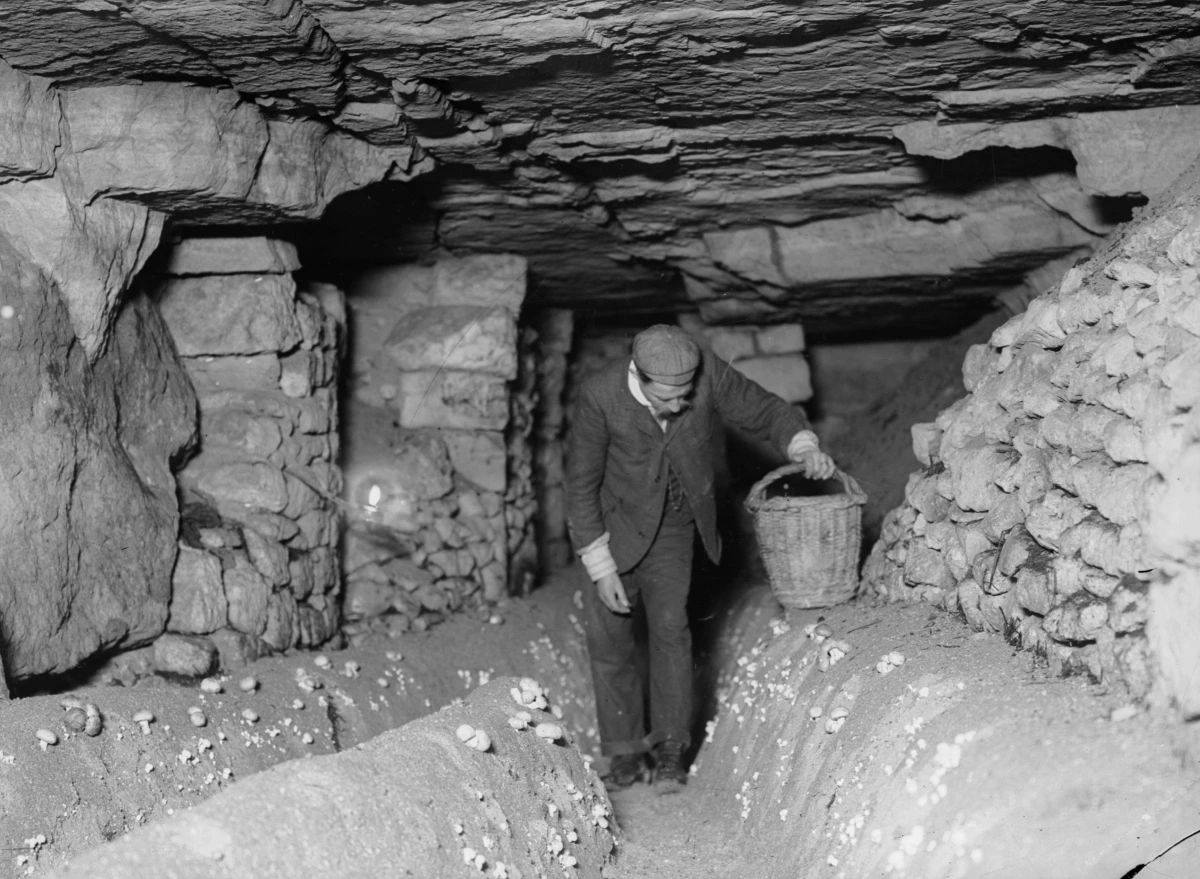
Various historical accounts, including the intriguing tale shared by Jean-Louis Carpentier of the Association du Champignon de Couche, attribute this subterranean shift to the valiant Napoleonic soldiers. According to Carpentier's narrative, the genesis of underground Paris mushroom cultivation in Paris catacombs traces back to the vicinity of the Eiffel Tower, where disenchanted deserters of Napoleon's army sought refuge in the hidden recesses beneath Chaillot hill. Little did they anticipate that the fortuitous amalgamation of their horses' manure and the microclimate within these cavernous depths would give rise to a thriving mushroom forest, offering them a lifeline in their time of need.
In Victor Paquet's enlightening treatise, "Traité de la culture des champignons" (1847), an alternative origin story emerges. This account attributes the discovery to Chambry, a resourceful Parisian farmer. In 1811, Chambry, faced with the disappointing yield of a harvest, made a serendipitous decision. He cast the remnants of his unproductive harvest into an abandoned quarry. To his astonishment, he soon realized that Paris mushrooms, unlike their forest-dwelling counterparts, thrived in the subterranean depths. The cultivation of these mushrooms in the shadowy limestone quarries proved transformative, ensuring a year-round supply of this culinary delicacy.
The Paris Catacombs now hold the remains of more than six million people, including prominent French revolutionaries.
However this discovery was made, it caught on. Mushrooms had retained their royal reputation from Louis' day, and demand was high. By 1880, more than 300 mushroom farmers worked in Parisian quarries to produce 1,000 tons of Paris mushrooms each year. Most of the quarries were not accessible by foot, so farmers used wooden ladders or pulley systems to lower themselves down in baskets. Once underground, they used hand-held lanterns to plant and gather mushrooms.
Exploring the Paris Catacombs
Navigating the Labyrinth
Visiting the Paris Catacombs is a unique experience, but it's important to be prepared. The tunnels stretch for approximately 200 miles, but only a small portion is open to the public. Guided tours are available, providing insight into the history, architecture, and haunting tales of the catacombs.
The Ossuary
The municipal ossuary in the Paris Catacombs is indeed one of the world's largest and unique in its underground location. It underwent a significant transformation before being opened to the public in 1809, thanks to the efforts of Inspector Héricart de Thury. He approached the site with a museographical and monumental vision, turning what was once a pile of loosely arranged bones into an organized display reminiscent of a quarry backfill.
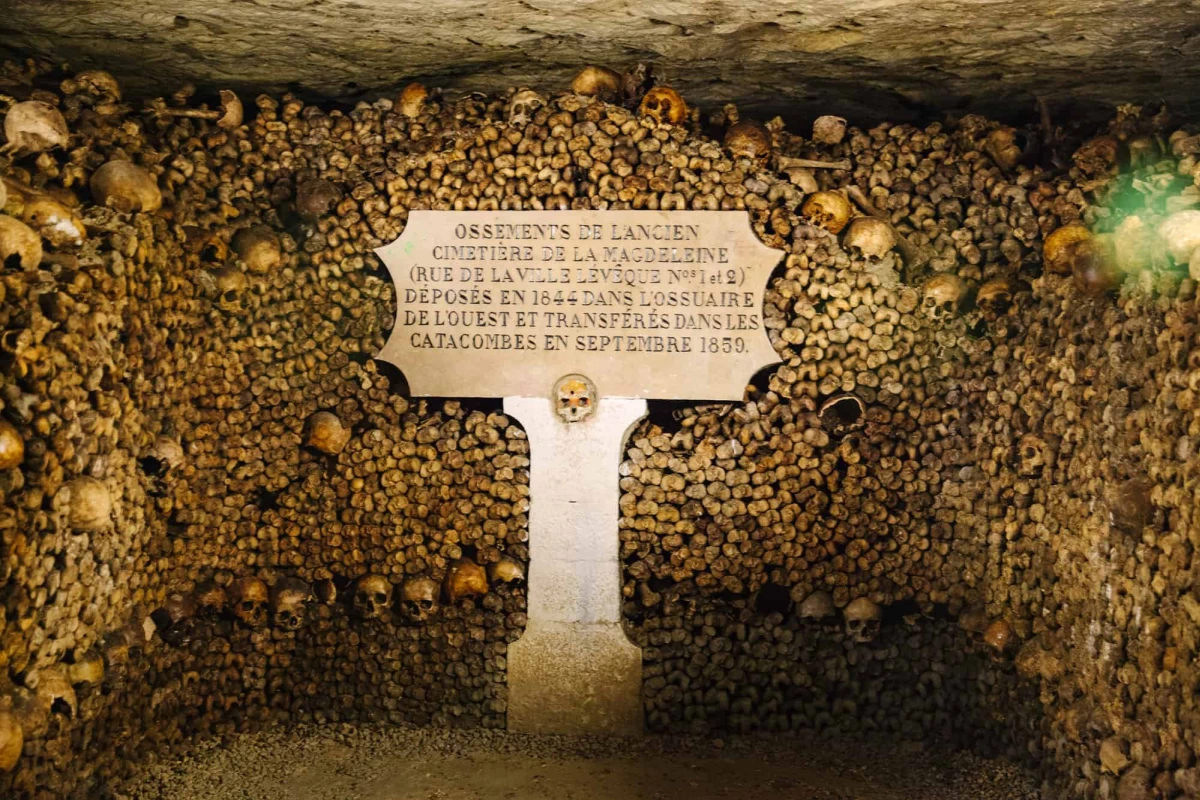
The facade of the catacombs is striking, featuring rows of tibiae (shinbones) alternating with skulls, creating a macabre yet fascinating pattern. Behind this wall, the remaining bones were stacked, often in the form of small fragments due to the haphazard disposal into the quarry.
In addition to the bone arrangements, Héricart de Thury introduced masonry monuments in styles reminiscent of Ancient Greece and Egypt, such as Doric columns, altars, steles, and tombs. These added a unique aesthetic dimension to the catacombs.
Various sections of the catacombs were given names inspired by religious, Romantic, or Antique sources, further enhancing the experience for visitors. Notable examples include the Lacrymatory Sarcophagus, the Samaritan Fountain, and the Sepulchral Lamp.
To provide an educational aspect to the catacombs, Héricart de Thury had two cabinets built, resembling traditional cabinets of curiosities. One was dedicated to mineralogy, while the other focused on pathology, displaying specimens related to bone illnesses and deformations, based on the research of Dr. Michel-Augustin Thouret in 1789. Plaques featuring religious and poetic texts were placed throughout the galleries to encourage introspection and meditation on death.
Beyond the intriguing displays, the subterranean environment of the Paris Catacombs has been the subject of various studies. Researchers, such as botanist Jacques Maheu and speleologist Armand Viré, took a keen interest in studying the flora and cave-dwelling crustaceans in this lightless environment.
In 1813, Héricart de Thury conducted an experiment by placing four goldfish in the basin of the Samaritan Fountain. While the fish survived, they were unable to reproduce and became blind, highlighting the challenges of life in the catacombs' dark conditions.
Photographer Félix Tournachon, known as Nadar, experimented with artificial light in the catacombs in 1861. Due to the long exposure times required in the darkness, he used dummies to represent workers in their underground environment.
Today, ongoing work in the catacombs includes efforts to consolidate and preserve the ossuary's bones in the humid underground environment. This work aims to respect human remains while also preserving the geological, archaeological, and historical heritage of the catacombs, presenting significant challenges.
It's worth noting that the term "Paris Catacombs" has taken on an extended and somewhat erroneous meaning, now often used to refer to the entire network of underground quarries beneath Paris, and sometimes even beyond the city. This shift in terminology reflects the fascination and intrigue surrounding these underground spaces.
Eerie Beauty
The catacombs are not just a macabre burial site; they are also a testament to human creativity and artistry. As you wander through the dimly lit tunnels, you'll encounter mesmerizing arrangements of skulls and bones, often forming decorative patterns and motifs. This juxtaposition of death and artistry creates a hauntingly beautiful atmosphere.
Practical Information for Visitors
- Hours of Operation: The catacombs are typically open to visitors from Tuesday to Sunday, but it's advisable to check the official website for the most up-to-date information.
- Guided Tours: To gain a deeper understanding of the catacombs' history and significance, opt for a guided tour. These tours are available in multiple languages.
- Dress Appropriately: The catacombs can be chilly and damp, so wear comfortable shoes and bring a jacket or sweater.
- Reservations: Due to their popularity, it's advisable to book your tickets in advance to avoid long wait times.
- Photography: Photography is permitted, but be respectful and mindful of the solemn environment.
FAQs about the Paris Catacombs
What is the purpose of the Paris Catacombs?
The Paris Catacombs were initially created to alleviate the overcrowding of cemeteries and improve public health. They later served military purposes and are now a historical and cultural attraction.
How deep do the catacombs go?
The catacombs extend approximately 65 feet beneath the surface, but most public tours only access a small portion of this vast network.
Are the catacombs haunted?
While there are no definitive reports of paranormal activity, the eerie atmosphere and history of the catacombs have led to many ghost stories and legends.
Can you explore the catacombs on your own?
No, access to the catacombs without a guide is restricted to maintain safety and preserve the site's historical significance.
Are there age restrictions for visiting the catacombs?
The catacombs are not recommended for young children or individuals with mobility issues due to the uneven terrain and low ceilings.
How can I book a guided tour of the catacombs?
You can book guided tours of the Paris Catacombs online through the official website or at the entrance, depending on availability.
Conclusion
The Paris Catacombs offer a captivating journey into the heart of the city's hidden history. As you explore this subterranean world, you'll be immersed in a unique blend of art, history, and a touch of the macabre. Whether you're a history enthusiast, an adventurer, or simply curious, the catacombs are a must-visit attraction that will leave you with a lasting impression of the fascinating depths beneath the City of Light.
Explore the depths of the Paris Catacombs and immerse yourself in a world filled with history, mystery, and the allure of the unknown. Whether you're a history enthusiast, an adventure seeker, or simply curious, this subterranean realm offers a unique and unforgettable experience.
Site location: 1 Av. du Colonel Henri Rol-Tanguy, 75014 Paris
GPS coordinates: 48.833921, 2.332197
Google Photos: Click here
For more content and exciting articles, follow our site, where we regularly update our column to bring you the best ideas for events or attractions in Paris!






